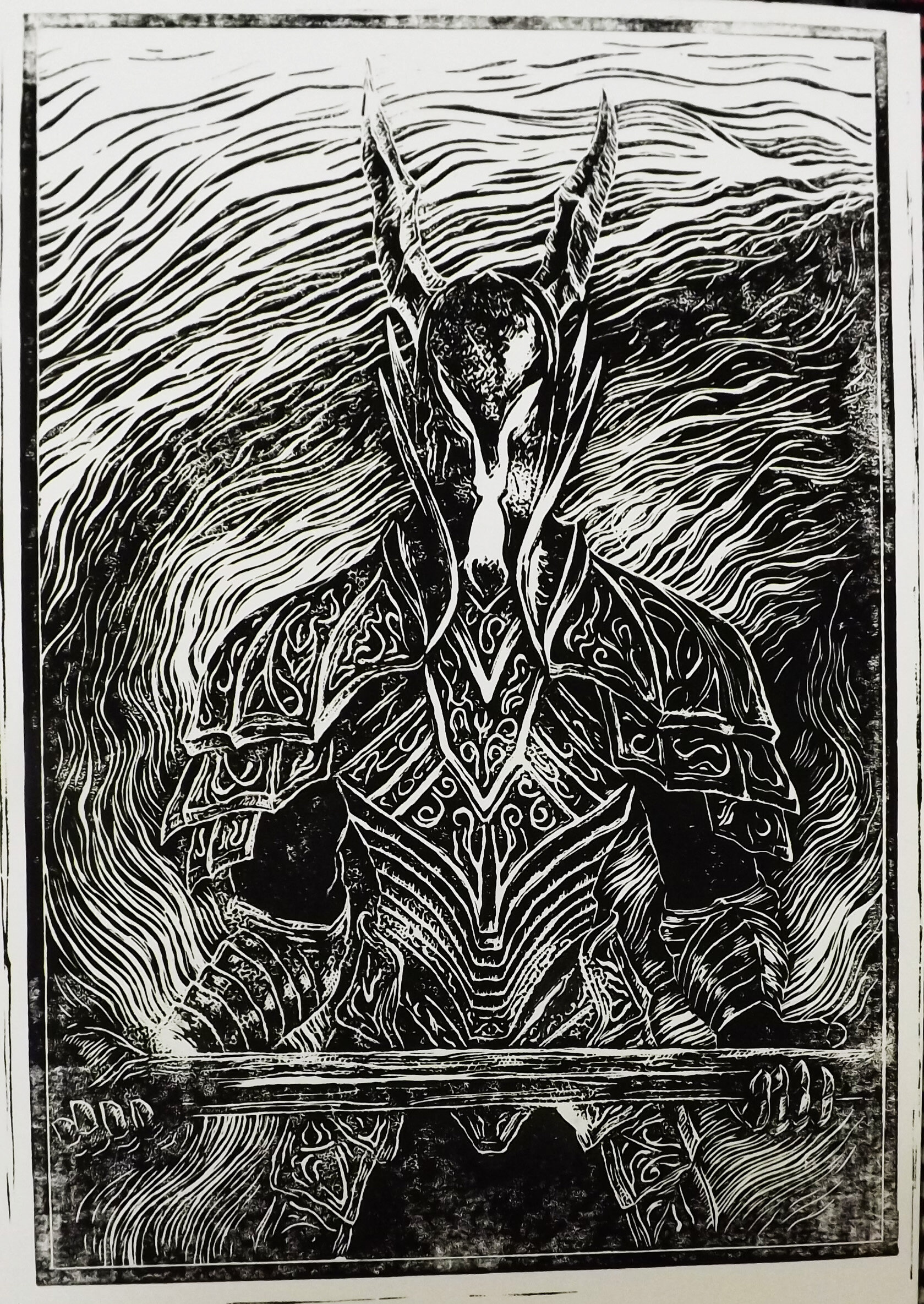Since adapting with this pandemic I've been channeling my inner need to craft and create with my hands. Fiding more time, I’ve gone back to my illustrative roots (coupled with my graphic design, and animation studies) with practicing more lino-printing. The great thing with lino and woodblock printing is that it doesn't require so much space, so a kitchen table or office desk will work just fine. With each new piece tackled, I've tried to Incrementally increase the size of lino, this itself presents different challenges, and as expected takes a bit more time too, especially when it comes to printing and inking for instance (my favourite part!) Being a big fan of the Dark Souls series and the overall aesthetic of the games, I wanted to depict one of the cover characters notably the Black knight (a common warrior in Lord Gywn's army), in his spooky and gnarly armour. He certainly gives that Sauron vibe!
Usually, the first stage for me in creating any type of design comes with gathering references to begin a starting point. I'm working from in-game references I had a clear idea I wanted to go with it and with the various images of the knight available I dove right in sketching out the design straight onto the lino. I'd strongly recommend practicing a few sketches, and rough thumbnails to help solidify the visual direction what your design could take, doing this, though more exhaustive will tend to result in more well more conceived end result. In my designs and paintings for instance, rarely is the first design I produce the one I go within the end perhaps 10% but generally, it can be a case of establishing the sketch prior to doing anything else. Many illustrators and designers will preach this also if your compositional sketch isn't working have another go perhaps with a different approach, more references, and coupled with inspiration at hand.
When it came to carving out the main outline, I became quite conscious of the kind of marks I started to make, the thicker and simpler lines the better in my experience. Furthermore, I've found only by doing your first test print-proof you can get a decent idea of what changes/iterations you can make to it. Through practice like most things you become more confident in your approach and execution, and it becomes more about building up your visual vocabulary through memory and repetition.
Once you start carving away your lino-plate you get into a kind into a rhythmic flow, very similar to drawing. The thickness of the line, how much pressure you apply whilst carving, the sharpness of your tools, and angles also apply considerably. It is important to take regular breaks and try to pull yourself away from time to time, especially if you are working on a complicated/detailed design.
When it comes to carving tools I'm a massive fan of the Swiss-made ones that have proven to be a worthwhile investment. There are many cheaper alternatives on Amazon which shouldn’t cost all that more than twenty quid, so building up your tools over time is a good way to go.
I hope you have enjoyed this latest entry, and I’ll be looking forward to creating more lino designs to show you all soon! And my foray back to regular writing as well. Keep well, and keep creating.
